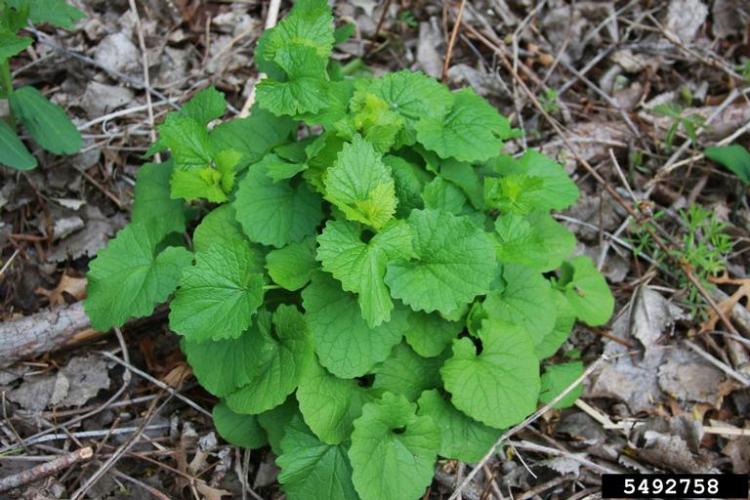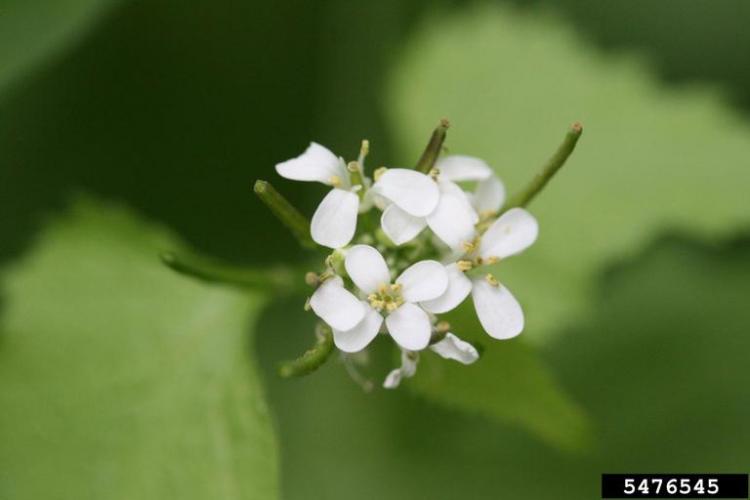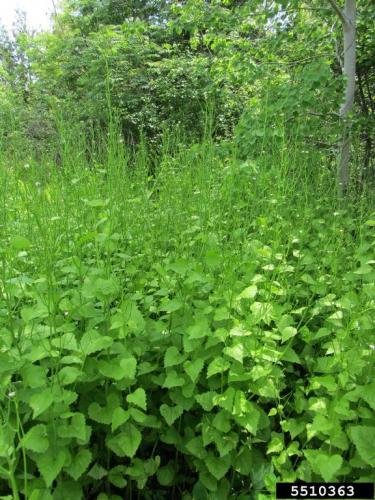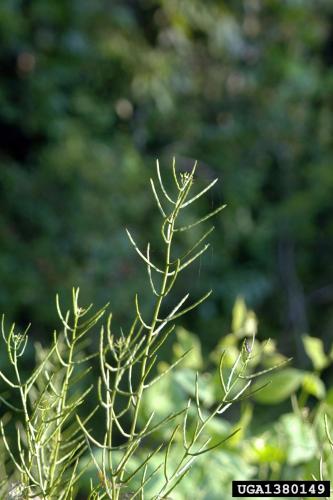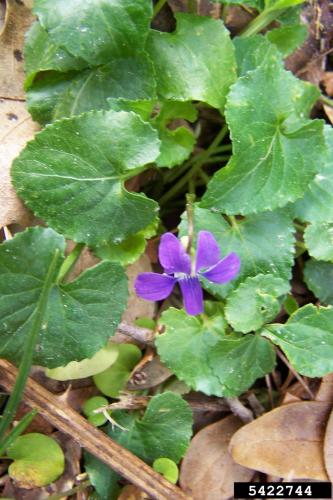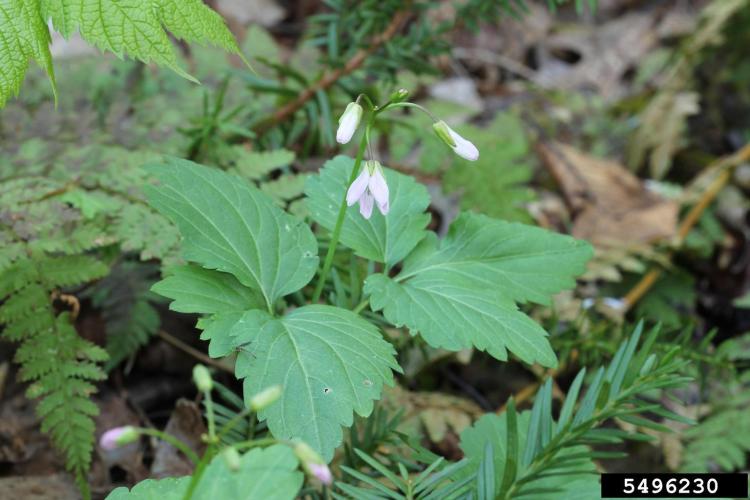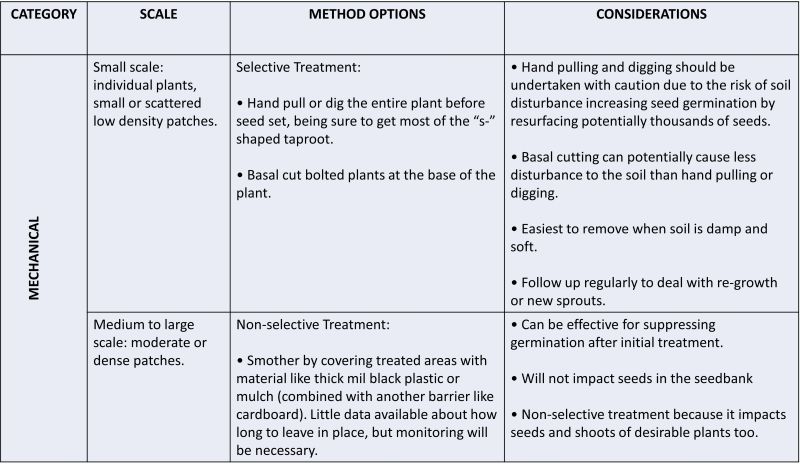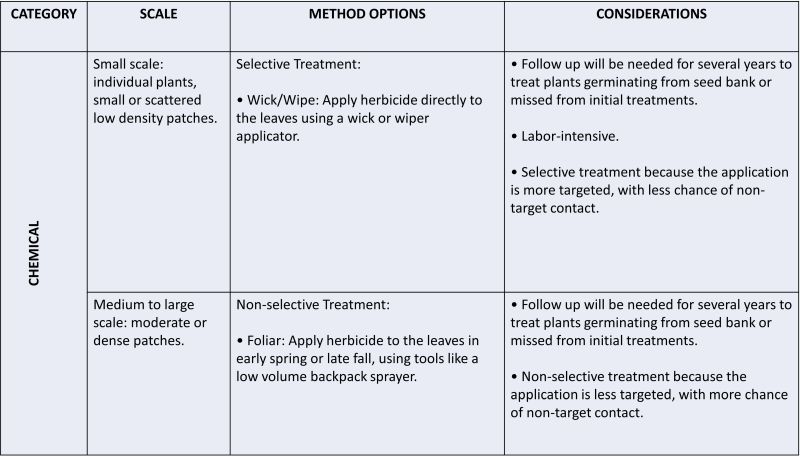Garlic Mustard
Identification
Appearance
Alliaria petiolata is an herbaceous, biennial forb. First year plants are basal rosettes which bolt and flower in the second year. Plants can be easily recognized by a garlic odor that is present when any part of the plant is crushed.
Foliage
Foliage on first-year rosettes is green, heart-shaped, 1-6 inches long leaves. Foliage becomes more triangular and strongly toothed as the plant matures.
Flowers
Second-year plants produce a 1-4 feet tall flowering stalk. Each flower has four small, white petals in the early spring.
Fruit
Mature seeds are shiny black and produced in erect, slender green pods which turn pale brown when mature.
Biology
Origin
Garlic mustard was originally brought to the United States from Europe during colonial times as an early spring edible. It's tasty, garlicky flavored leaves make a fantastic pesto and great addition to soups. Help control garlic mustard by harvesting it in the spring and using it for culinary adventures.
Habitat
Abandoned Field, Agricultural Field, Edge, Open Disturbed Area, Pasture, Railroad Right-of-Way, Roadside, Utility Right-of-Way, Vacant Lot, Yard or Garden. Euphorbia cyparissias is most often found in old fields and natural grasslands.
Life cycle
Beginning in May (in the mid-Atlantic Coast Plain region), seeds are produced in erect, slender pods and become shiny black when mature. By late June, when most garlic mustard plants have died, they can be recognized only by the erect stalks of dry, pale brown seedpods that remain, and may hold viable seed, through the summer.
Ecological Threat
Alliaria petiolata is an aggressive invader of wooded areas throughout the eastern and middle United States. A high shade tolerance allows this plant to invade high quality, mature woodlands, where it can form dense stands. These stands not only shade out native understory flora but also produce allelopathic compounds that inhibit seed germination of other species. Alliaria petiolata is native to Europe and was first introduced during the 1800s for medicinal and culinary purposes.
Vermont Distribution
Citations
Photo Credit
1380149 & 5476545, Chris Evans, University of Illinois, Bugwood.org
5510363, Caleb Slemmons, National Ecological Observatory Network, Bugwood.org
5492758, Steven Katovich, USDA Forest Service, Bugwood.org
Information Credit
Michigan State University Extension Summary on Garlic Mustard
Midwest Invasive Plant Network Overview for Managers on Garlic Mustard, 2021
Ontario Invasive Plant Council Best Management Practices for Garlic Mustard
